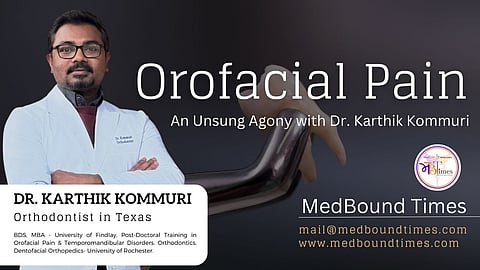Dr. Meghana: Differential diagnosis of OFP?
Dr. Karthik: Primarily, the differential diagnosis for OFP depends on the diagnosis, the nature and location of the pain. Generally speaking, conditions that may be considered in this category can range between ear pain, arthritis, Burning Mouth Syndrome (BMS), neurovascular conditions, tendonitis, mucositis, muscle spasms, degenerative disc disorders, and different types of headaches, to viral infections (Herpes Zoster, Shingles, etc.). Some other conditions that can be considered during differential diagnosis in OFP are related to the diseases of the cranial nerves, for example, trigeminal and glossopharyngeal neuralgias; and neuropathies.
Dr. Meghana: Therapeutic Management of Orofacial Pain?
Dr. Karthik: The management depends on the diagnosis, the etiology, the site of pain, and the nature and intensity of pain/discomfort. For example, in a TMD case, the general protocol would be prescribing adequate rest, hot/cold compressions, a soft diet, avoiding hard/chewy foods, focusing on identifying and eliminating all possible etiological factors, physical therapy (massage therapy), pharmacological management (analgesics, anti-depressants), prescribing a customized occlusal splint (hard/soft) and follow up visits as needed to monitor the progress. Besides therapeutic management, patient education would also be an important step in the management of OFP.
Himani Negi: What’s your take on self-medication or over-the-counter (OTC) medicines in a country like the USA?
Dr. Karthik: Self-medication is not appropriate as it is unsafe for patients. I will encourage patients to seek medical advice before using any medications. In the United States, it is not easy to just get your hands on any medication; there is a clear classification of what is over-the-counter (OTC) and what is not. For example, basic pain medication drugs like Ibuprofen-200 mg can be OTC, but for higher-grade medications, one needs a prescription from a certified provider. This system would probably come into place keeping patient safety in mind. There is an existing condition of medication overload in the US. Coming to OFP, sometimes over usage of drugs like antipsychotics, or even simple analgesics can lead to conditions like medication overuse headaches, also commonly known as rebound headaches. Therefore, one has to be extremely cautious when using unprescribed medications.


